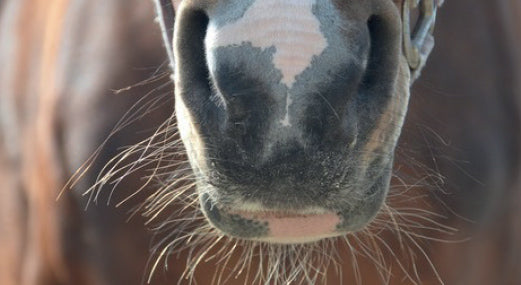Health & Nutrition
How do ‘pressure headcollars’ affect equine behaviour?
Despite domestication and careful management, horses retain many of their innate flight and fright behaviours in response to environmental challenges. Consequently, the use of equipment to manage and reduce the likeli...
Read More
“Falling back” – How does changing daylength affect equine health and wellbeing?
Winter is coming, and that means some fundamental changes for our horses. Changing daylength and decreased temperatures are two of the most obvious impacts of winter. Cold, dark mornings and evenings become the standa...
Read More
Are alterations in the gut microbiota responsible for equine Faecal Water Syndrome?
Faecal Water Syndrome (FWS) is a condition where affected equids pass droppings of normal consistency but they are accompanied by watery faecal content either before, during or afterwards1. The cause of FWS remains un...
Read More
Antibiotic resistance in bacteria associated with equine respiratory disease in the United Kingdom
Bacterial infection, often secondary to viral respiratory disease, is an important cause of upper and lower respiratory diseases in horses. The cytological examination and bacterial culture of lower airway respiratory...
Read More
Can horses smell fear and happiness?
“Horses can smell fear you know”. A phrase many equestrians will have heard, but how true is it? A recent study (1) suggests there might be some truth in this statement and the results may have some interesting conseq...
Read More
Does concurrent omeprazole prevent gastric ulceration with phenylbutazone (bute) therapy?
Non‐steroidal anti‐inflammatory drugs (NSAID e.g. phenylbutazone, “bute”) are commonly used for treatment of inflammation, fever and pain in horses. Adverse effects of these drugs include kidney damage and ulceration ...
Read More
Influence of rider bodyweight on equine gait and behaviour
It is widely publicised that a growing number of the human adult population are overweight or clinically obese. Although it is recognised that inappropriate rider size has welfare implications for horses1, there is a ...
Read More
Does Intra-articular Steroid Therapy Affect Tendon Structure?
Deep digital flexor tendon (DDFT) injuries including those accompanying degenerative changes of navicular bone are a major cause of lameness associated with navicular disease. Injection of corticosteroids into the nav...
Read More
Thoroughbred use, health and owner satisfaction following retirement from racing
Each year a great many Thoroughbred racehorses retire and are rehomed for alternative careers unrelated to racing. Whilst studies investigating racehorse health are frequent, there are few regarding the health of Thor...
Read More
Is sprouted barley beneficial to gut health?
Sprouted cereals have a better digestibility and contain oligosaccharides that act as prebiotics improving and stabilising the intestinal flora. Researchers in Spain have recently studied if supplementation with germi...
Read More
Accuracy of diagnostic tests for detection of strangles carriers
Strangles, infection of the upper respiratory tract with Strep equi var. equi, is common in the equine population. A subclinical ‘carrier’ status exists in which residual bacteria persist, usually in the guttural pouc...
Read More
Natural vs. Synthetic Vitamin E Supplementation in Exercising Horses
Vitamin E is abundant in fresh grass but becomes unstable, reducing the amount available to the horse, in the process of baling and storing hay. Horses without access to pasture therefore require supplemental vitamin ...
Read More













